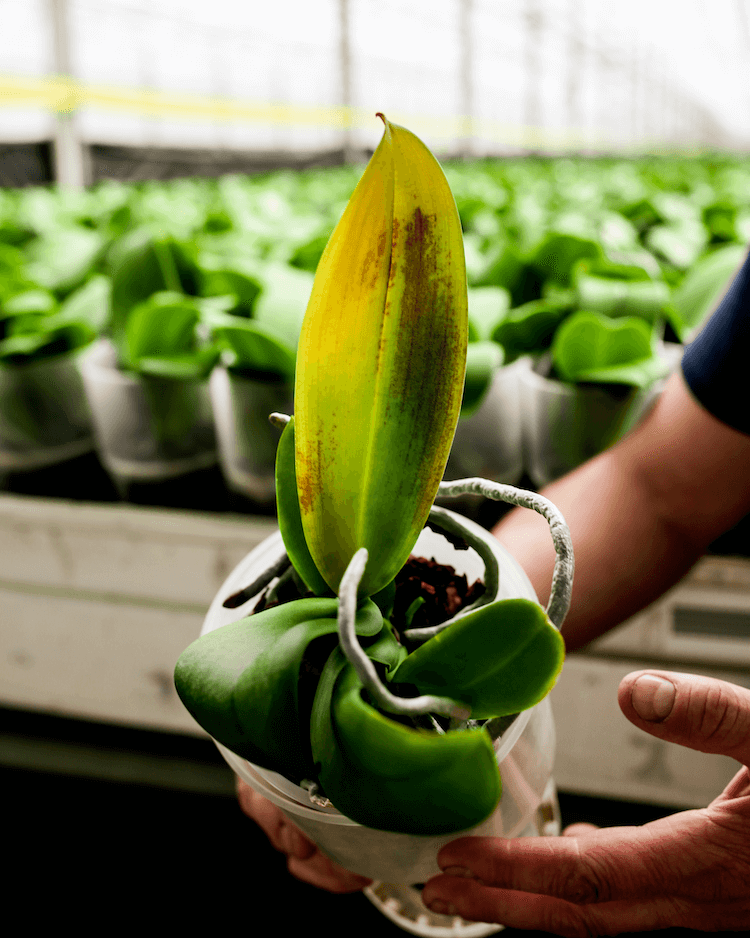
When our customers call asking if their orchid is dead, the answer is usually no. It's "resting" or in the vegetative state, which is a normal part of an orchid's lifecycle. While orchids are low-maintenance houseplants, there are a few signs that it's ready for the orchid graveyard.
With spring in full swing, you might be checking your orchid hoping for those beautiful new blooms to appear. If it isn't showing any signs of new growth, look for these telltale signs that its lifecycle may have ended:
Healthy roots usually equal a healthy orchid, which will have roots that are plump, green and firm. One of the biggest mistakes plant care mistakes people make is overwatering, which can lead to root rot. If severe enough, it can damage most or all of your orchid plant’s roots, leading to root loss.
So what does root rot look like? Kind of what you'd expect: brown and mushy roots! Because the root system delivers nutrients to the plant, having no roots is an almost-certain death sentence for a plant.
While some cases of root rot are fixable, if all of the plant’s roots have turned brown and there are no healthy green areas left, it may be time to discard the plant.
Since Phalaenopsis Orchids are epiphytes that naturally grow in the crooks of tree branches and trunks, they lay "sideways" compared to how we keep them in pots. This angle, along with natural breezes, facilitates the wicking away of rainwater from the leaves.
The "upright" potting direction, on the other hand, creates the possibility of water collection between the leaves and the crown. This is a recipe for crown rot. To avoid this problem, keep water away from the leaves by always placing ice cubes (or pouring water) only on the potting substrate of your plant.
Check the center of your plant. Is it discolored or brown? Is the base of its leaves discolored and mushy looking? If so, you may have a case of crown rot. Rot can spread quickly and it's possible to not notice your plant is suffering from it until its leaves have turned yellow or black.
Bud blast is a common affliction for Phalaenopsis orchids and is always the result of stress. It causes the flower buds to wither and fall from an otherwise healthy-looking plant. Does it mean your orchid is dying? Maybe, but maybe not.
While sometimes an orchid has a genetic mutation that prevents it from producing viable blooms, the most common reasons we see for bud blast are dehydration, sudden temperature fluctuations, physical jarring, dim lighting and low humidity.
If any of the above apply to your orchid, address those issues immediately. You may be able to revive your orchid with a little extra TLC.
Mealybugs are one of the many common orchid pests that threaten orchids, but you can often eradicate an infestation with rubbing alcohol, insecticides or horticultural soap.
While Phalaenopsis orchids are resilient, there are times when the situation is so severe the plant should be 'put down.' If you notice any of the above signs or your orchid isn’t recovering from an infestation or case of rot, it is probably dead and you may want to consider replacing it with a new, healthy orchid.

Copyright Just Add Ice® Orchids 2023